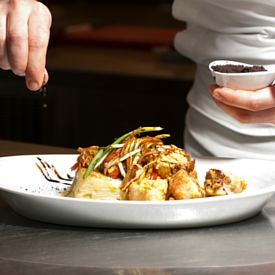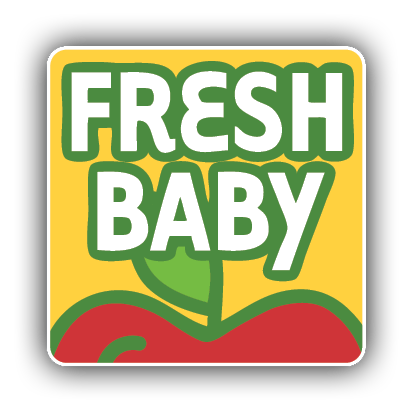
Professional chefs work hard to create meals that not only taste great, but also look great. No one can deny that a nicely plated meal looks great, but did you also know it’s healthier for your family? Buffet setups and family style eating typically lead to everyone going back for seconds, thirds, or piling on too much of certain food groups. The health benefits of plating your meal instead of serving family style (or buffet) include improved portion control and better balance of a variety of foods.
A lot of detail and practice goes into mastering the art of food presentation, but there are easy ways for you to create healthy plates with an artistic touch. Here are some ways to help you dress up your plate with textures and colors to make your family meals look better and more appetizing!
Think MyPlate when planning and plating:
Plan your plate to include a serving from the main food groups: vegetables, fruits proteins whole grains and dairy.
Vegetables/Fruits: Keep colorful options in mind by choosing a variety of fresh, in season fruits and vegetables. Remember about half your plate will be fruits and vegetables, so the color splash from these food groups will have a big impact. Steam or lightly sauté vegetables so they keep their vibrant color. Overcooked vegetables tend to loose their visual appeal and texture..jpg)
Proteins: Aim for a 3 oz. portion-size of protein, which is about the size of your palm. Cube proteins and thread pieces on skewers before cooking or slice cooked meats before placing them on the plate. Play with textures by topping proteins with fruit salsa, lemon slices or cheese crumbles.
Grains: Round out the final quarter of your plate with whole grains such quinoa, whole wheat tortillas, or brown rice. Dress up your whole grains by tossing 1-2 tbsp. of chopped, fresh herbs such as basil, parsley or cilantro just before serving.
Dairy: The dairy group is often represented in recipes, by adding cheese or milk to a dish or it is a beverage. A light sprinkle of cheese crumbles is nice touch to salads or a splash of milk added to vegetable purees will create a creamier texture.
Presentation matters: You don’t have to spend hours creating a masterpiece on your dinner plate, but several studies have proved that offering a plate full of colors, textures, and some creativity in the presentation made the food more enjoyable.
Tips to Plate Like a Pro
1. White, large rimmed plates make food look best. .jpg)
2. As general guide, visualize a clock on your plate with fruits and vegetable place from 7-1 o’clock, grain placed at 1-4 o’clock and proteins at 4-7 o’clock.
3. Pour dressings into squeeze bottles and drizzle salad dressing horizontally for a geometric finish
4. Add a little height to your plate by layering grains under the protein or leaning vegetables against the grains or proteins.
5. Spoon sauces or gravy on the bottom of the plate not over the food. Vegetable purees (aka homemade baby food) can add color, a smooth texture and extra nutrition. Use vegetable purees like sauces by plating then under the food.
6. When there is room, finish your plate with a healthy garnish, like a slice of citrus, sprig of parsley, or a couple basil leaves.
You don’t have to be a professionally trained chef to perk up a plate. Even the simplest touch can give you a feeling of pride and provide your family and guests with a culinary experience.
.jpg)


